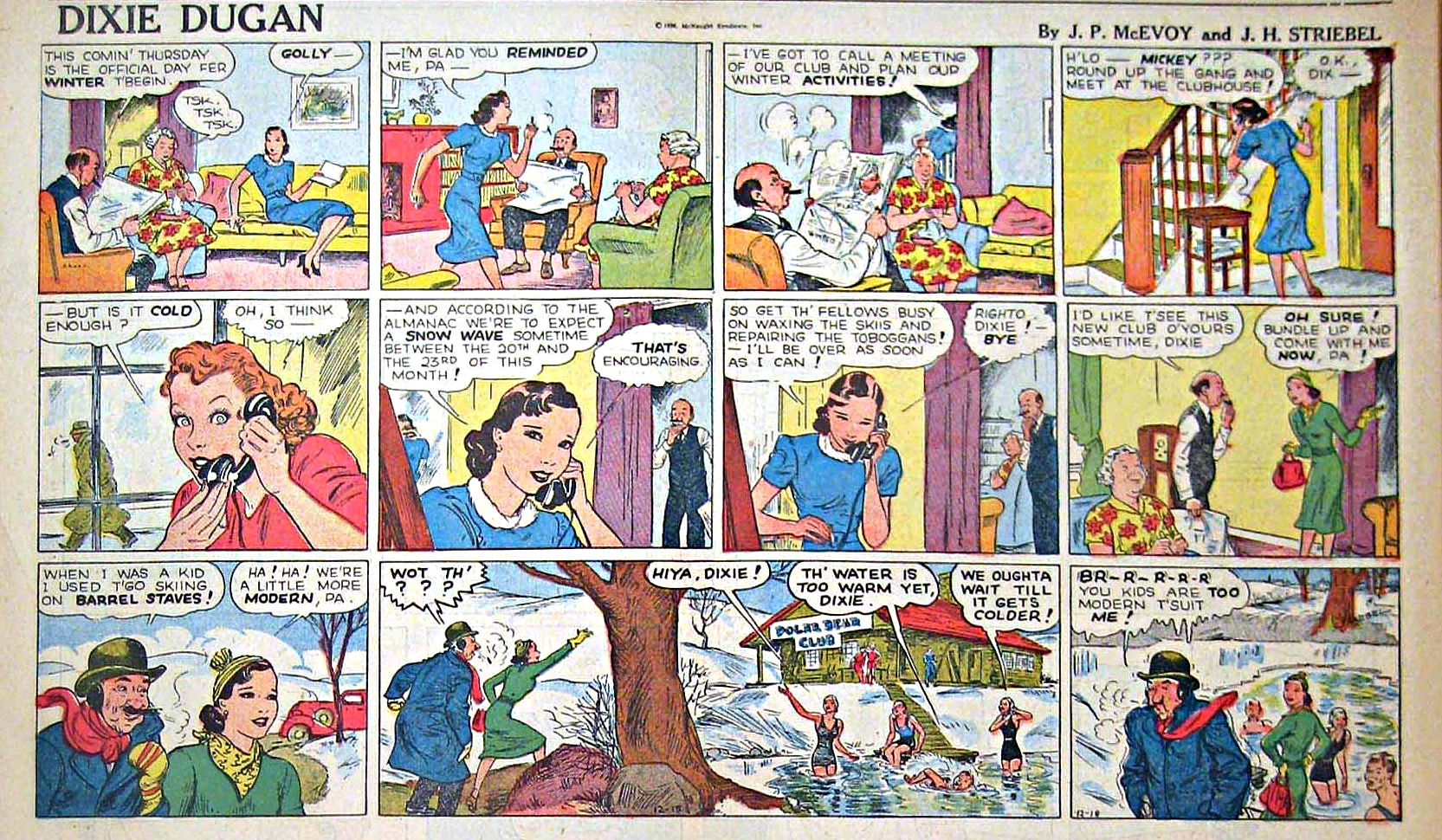Click the image to see a larger version.
Dixie Dugan by J.P. McEvoy and J.H. Striebel is an interesting case of a comic strip adaptation transcending its source material. It was based on a novel by McEvoy that was serialized in Liberty Magazine in the late 20's about a Hollywood showgirl named Dixie, aptly titled "Show Girl." It had previously been adapted into a George Gershwin musical as well as two movies, all of which focused on the Hollywood aspect of Dixie's life. In 1929 Striebel, who had done the illustrations for Liberty Magazine when the novel was first serialized, was tasked by McEvoy with doing the artwork for the comic strip adaptation that McEvoy was writing. The comic strip began as a pretty straight adaptation of the novel, but as the Depression wore on the travails of a Hollywood showgirl who wanted to be a star were not quite as interesting to most people. Dixie's Hollywood career ended and she was more focused on finding any work she could to support her family. The strip took on a life of its own, and it wasn't long before Dixie and the other characters bore almost no resemblance to the source material. By the time the next Dixie Dugan movie adaptation came around in 1943, her Hollywood escapades were not even mentioned and it mainly shows her doing what she can to help the war effort by... being a cab driver?
Anyway, as can be seen here, Dixie doesn't seem to have much interest in Hollywood but more interest in doing a polar plunge with her swimming club. I've never understood the appeal of this myself, but then again I don't really swim at all. I was also not entirely sure why it would be considered a "modern" thing to do, but after some research I've come to find out that it wasn't really a thing until the 20th century. I guess people before then had a little more sense.
